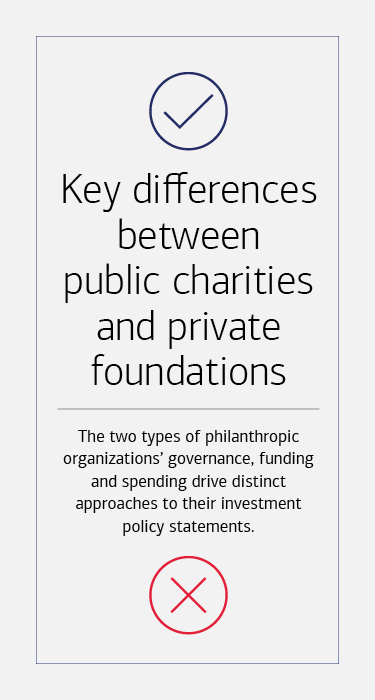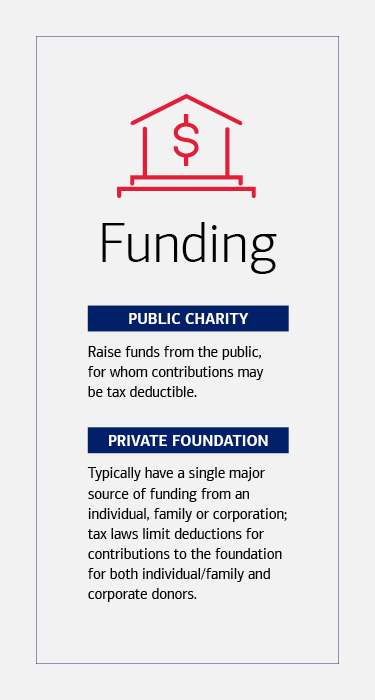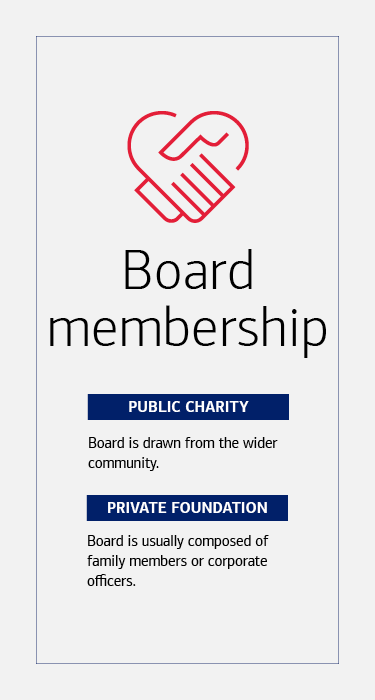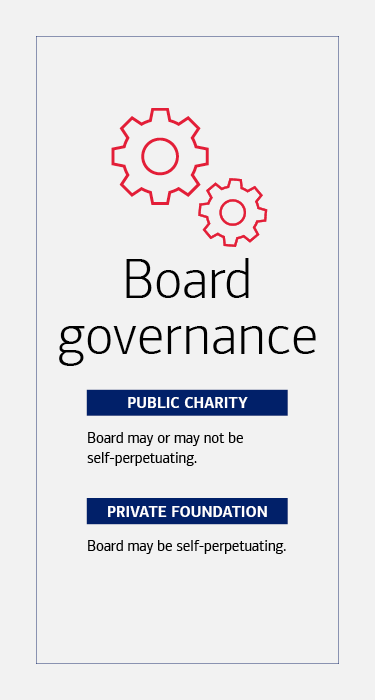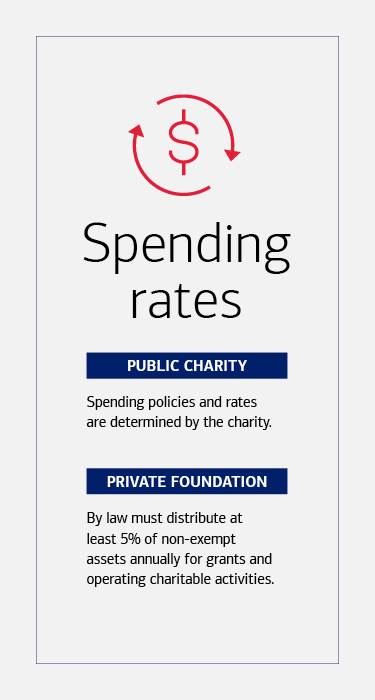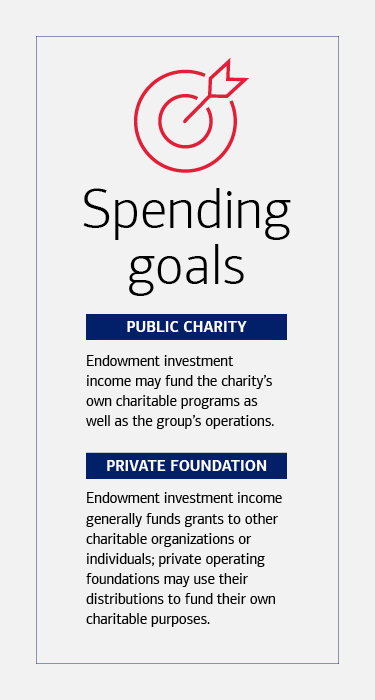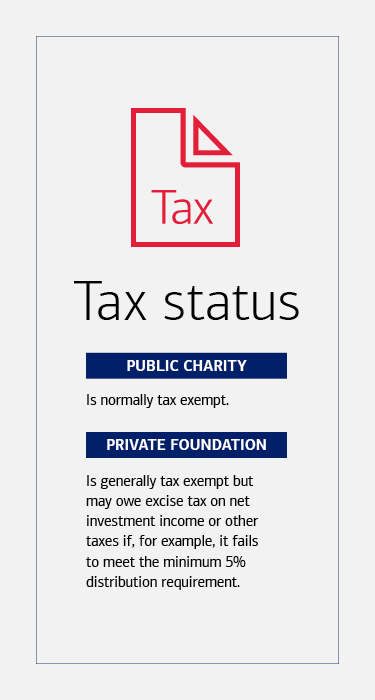Start with your mission
Creating an IPS begins with spelling out the purpose of the organization’s endowment. “Money serves mission,” says Jarvis. For private foundations, typically established and run by individuals, families or corporations, that means identifying the charitable goals that are to be accomplished and meeting the legal requirement that they spend at least 5% of the value of their assets annually, generally through making grants to other nonprofits. Public charities have more flexibility, and spending may vary from year to year; in some years, this kind of nonprofit may decide not to spend from its endowment.
Match investment return goals with spending needs
Next, the IPS needs to set a target for investment returns. Apart from the 5% minimum that private foundations must spend, public charities spend an average of about 4.5% of their assets each year, and the endowment needs to generate a return that can cover those expenditures. “But an organization’s board and its other fiduciaries have an additional legal responsibility,” says Jarvis. “They need to ensure that the endowment maintains its inflation-adjusted purchasing power over the long haul.”
That means adding an estimate of long-term inflation to the investment target. Until recently, most organizations used 2%, and even though prices have risen at a much faster rate, a figure of 3% may be reasonable as a projected average over the next 15 to 20 years, Jarvis says. Adding 3% to 4.5%, with an additional 1% to cover the costs of investment management, might bring the return target to 8.5%.
That target is the return, on average, that the endowment’s investments need to earn. But for the organization’s fiduciaries, determining how to invest those funds also means considering the risks that may affect investment performance. “Risk is often thought of as volatility — how much returns may fluctuate,” says Jarvis. “But there are also other kinds of risk — of capital loss and liquidity, risks to an organization’s reputation and quantitative measures of risk that can help you see how much risk you’re assuming with a given investment, bearing in mind that it is the total risk, at the portfolio level, that is most relevant over time.” All of those, articulated in the IPS, help guide the organization’s investment strategy.
Agree on investment types
Then there is the matter of what kinds of investments are approved or prohibited. Some organizations will choose to stick with traditional assets such as U.S. stocks and investment-grade bonds, perhaps adding international equities, says Jarvis. Other nonprofits, particularly larger ones, may be willing to consider hedge funds, real estate, private equity and other investments that can serve to broaden diversification.
But the mission and values of an organization may also affect what assets are considered suitable or off limits. “To take one example, a private family foundation may feel that its values need to be expressed through the portfolio," Jarvis says. A board's decision to adopt criteria for its investment portfolio might require acknowledgment in the IPS.
Align asset allocations
Based on all those factors — the endowment’s purpose, its investment target, the approach to risk and approved and prohibited investments — as well as the need for liquidity to fund spending goals, the IPS will specify a target asset allocation for the endowment. “There need to be ranges around which the individual allocations are permitted to move as markets move,” says Jarvis. So, for example, a 20% allocation to a particular asset might be allowed to go as high as 30% or as low as 10%. When allocations go above or below those ranges, investment managers will rebalance, buying or selling assets to bring the portfolio back to within its target range.
Revisit on a regular basis
Once a nonprofit has developed its investment policy statement, it should be reviewed every year. And because an organization’s board members and other fiduciaries, who are legally responsible for the entity’s endowment, may not be experts in portfolio construction and management, most nonprofits choose to work with financial professionals such as those at Bank of America who can guide the process of establishing and implementing investment policies.
“When Bank of America works with a new organization, reviewing or creating an IPS is one of the first things we do,” Jarvis says. “We talk with them about their mission, and then we help them to incorporate their goals into this document.” Then the investment managers can use the IPS as a blueprint for meeting those objectives, in both calm and turbulent financial markets.

